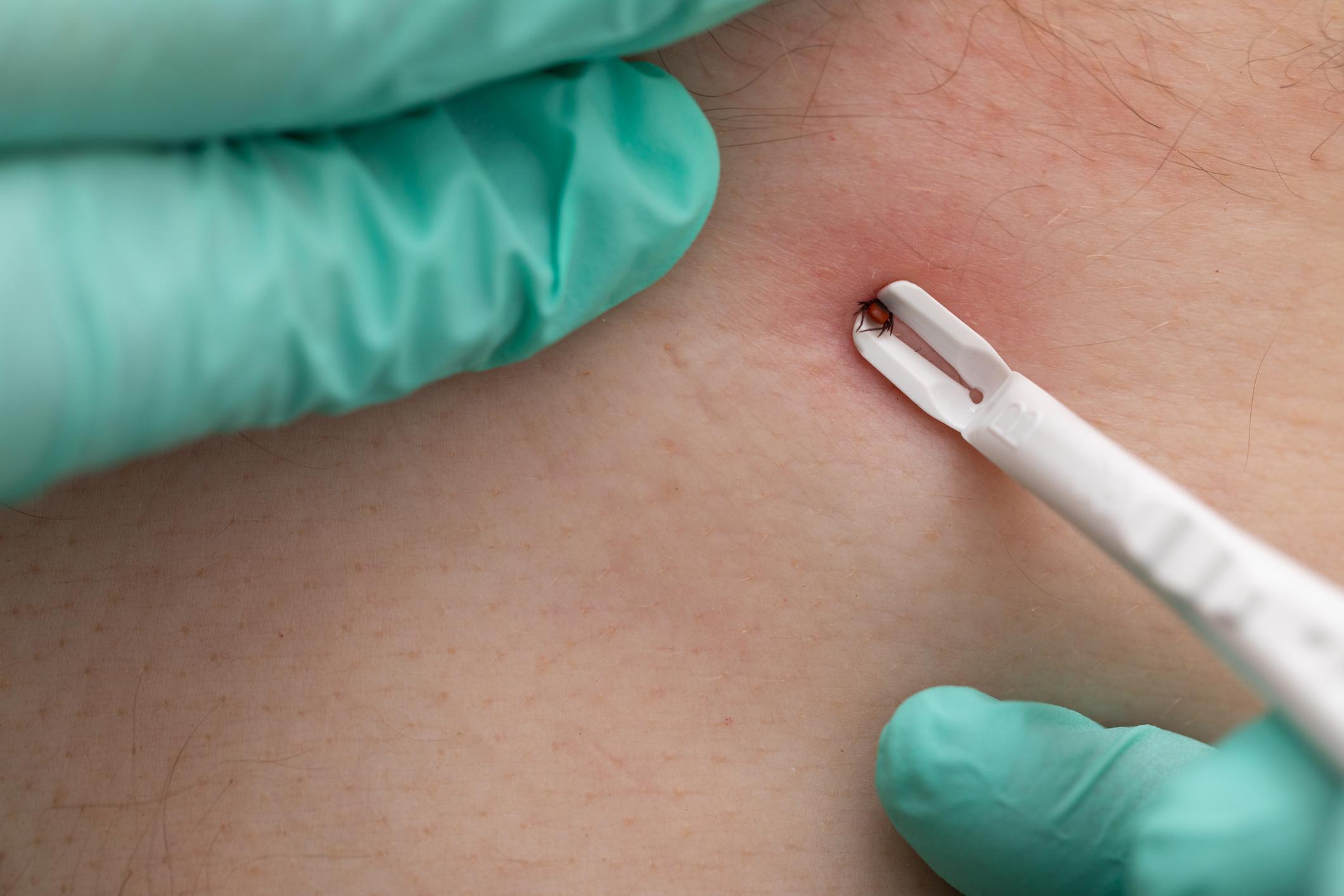How To Remove a Tick According to an Expert
Posted by Mosquito Squad
January 29, 2025

Author: Emma Grace Crumbley, Entomologist
So you found a tick on you, your pet, or your loved one, and you're trying to get it out? Do not fear; Mosquito Squad is here to help! Check out these tips from our insect science expert, Emma the Entomologist, for how to remove a tick.
Gather Your Supplies
Before you try to remove the tick, you'll need a few tools to get the job done safely and quickly. First, get some tweezers with a pointy end. The pointier, the better. These will be used to grasp the tick by the head and pull it fully out. If you don't have a pointy tweezer, a tweezer of any kind is important to have on hand. Tick removal kits usually come with a “tick key” that can remove ticks, but I find tweezers are easier to use.
You may also want to wear gloves if you're squeamish, have a paper towel or trash can nearby to discard the removed tick, and have some small bandages and alcohol wipes in case the tick bite wound begins to bleed.
You will not need matches, a Swiss army knife, or nail polish. Many folk remedies and medical myths suggest burning, stabbing, and suffocating ticks is the only true way to kill these arthropods. The reality is a tick in the trash is as good as a dead tick. With no access to hosts and no blood meals nearby, that tick that gets thrown away will not pose another threat to you or your home.
Wash Your Hands and Clean Your Tweezers
Once you've gathered the things you'll need, sterilize everything as best you can. Wash your hands thoroughly with soapy, warm water, and disinfect your tweezers with soap or a disinfectant. Make sure that gloves, paper towels, and bandages are new and clean.
Grasp Tick by the Head
Taking your tweezers in your dominant hand, place the pointed end of the tweezers around the tick's head. Ticks use their specialized mouthparts, called hypostomes, to saw their mouth into the skin and draw blood. Pulling a tick out by the body will not completely remove the tick and may lead to irritation, inflammation, and a greater risk of infection. The tick may move its legs when you grasp the head, but the hypostome keeps the tick in place so it cannot run away. Take as much time as you need to closely and firmly grasp the tick's head.
Pull Directly Out
With tweezers secured around the head, pull the tick straight out. Do not attempt to twist the body or insert tweezers into the skin below the head to remove the tick. These actions can lead to a more difficult removal and an increased risk of injury at the site of the wound. The tick may come out immediately or may require more force to remove. Do not worry if the first pull does not remove the tick. Reposition your tweezers around the head, and pull again until the whole tick is removed.
Discard the Tick and Clean the Area
Once the tick is removed, discard the tick however you prefer. I recommend wrapping the tick in a paper towel or tissue and throwing it in the trash, but any method you feel comfortable with should work as long as it removes the tick from the proximity of nearby potential hosts. Again, you do not need to stab or burn the tick to effectively discard it.
After you throw the tick away, be sure to clean and treat the area. You can either wash the area with warm, soapy water or disinfect it with an alcohol wipe from a first aid kit. Cover the wound with a bandage if it bleeds after the tick is removed.
Monitor the Wound Site
Most tick bites do not result in the transmission of a tick-borne illness. However, in the days after removing the tick, it's important to monitor the wound site in the event tick-borne illness symptoms occur. Check for changes in skin coloration, rashes, welts, and intense pain around the area, and report any findings to your doctor. To track if a rash or welt is spreading, take pictures of the wound site and send them to your doctor. If you contract a tick-borne illness, like Lyme Disease or Rocky Mountain Spotted Fever, you may experience flu-like symptoms in the days following the tick bite. If you feel sick or intensely fatigued, talk to your doctor about your recent tick encounter.
Prevent Future Tick Bites
The best way to protect yourself and your loved ones from tick bites is to prevent ticks from taking over your backyard. Ticks thrive in shady, damp areas like woodpiles, rodent nests, and forest edges near your home. With Mosquito Squad, our highly trained technicians are excellent at identifying tick harborage areas, and our traditional barrier treatment helps remove up to 85-90% of pests in your yard. Call your local Mosquito Squad to learn about tick management options and schedule your service today.
